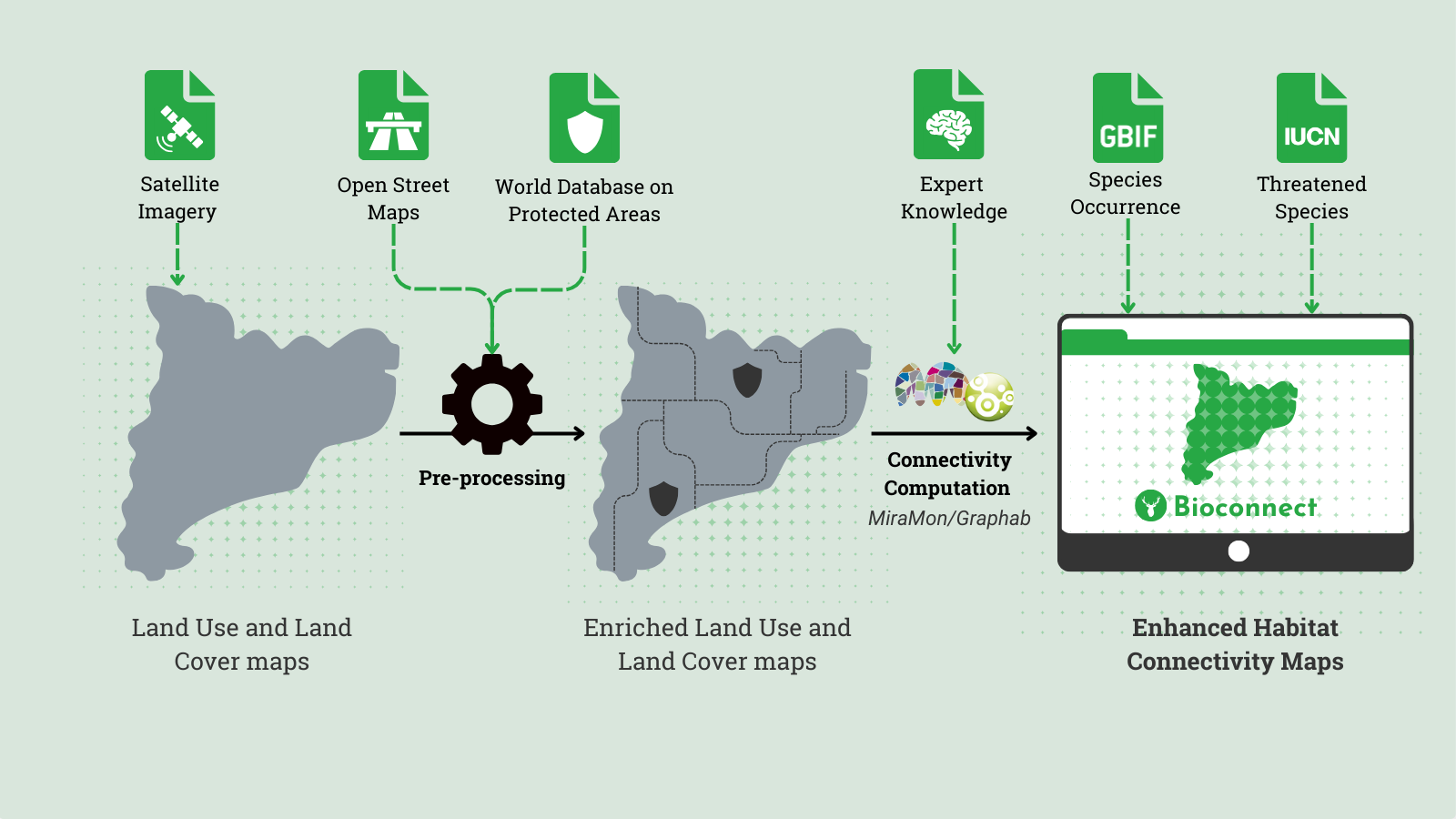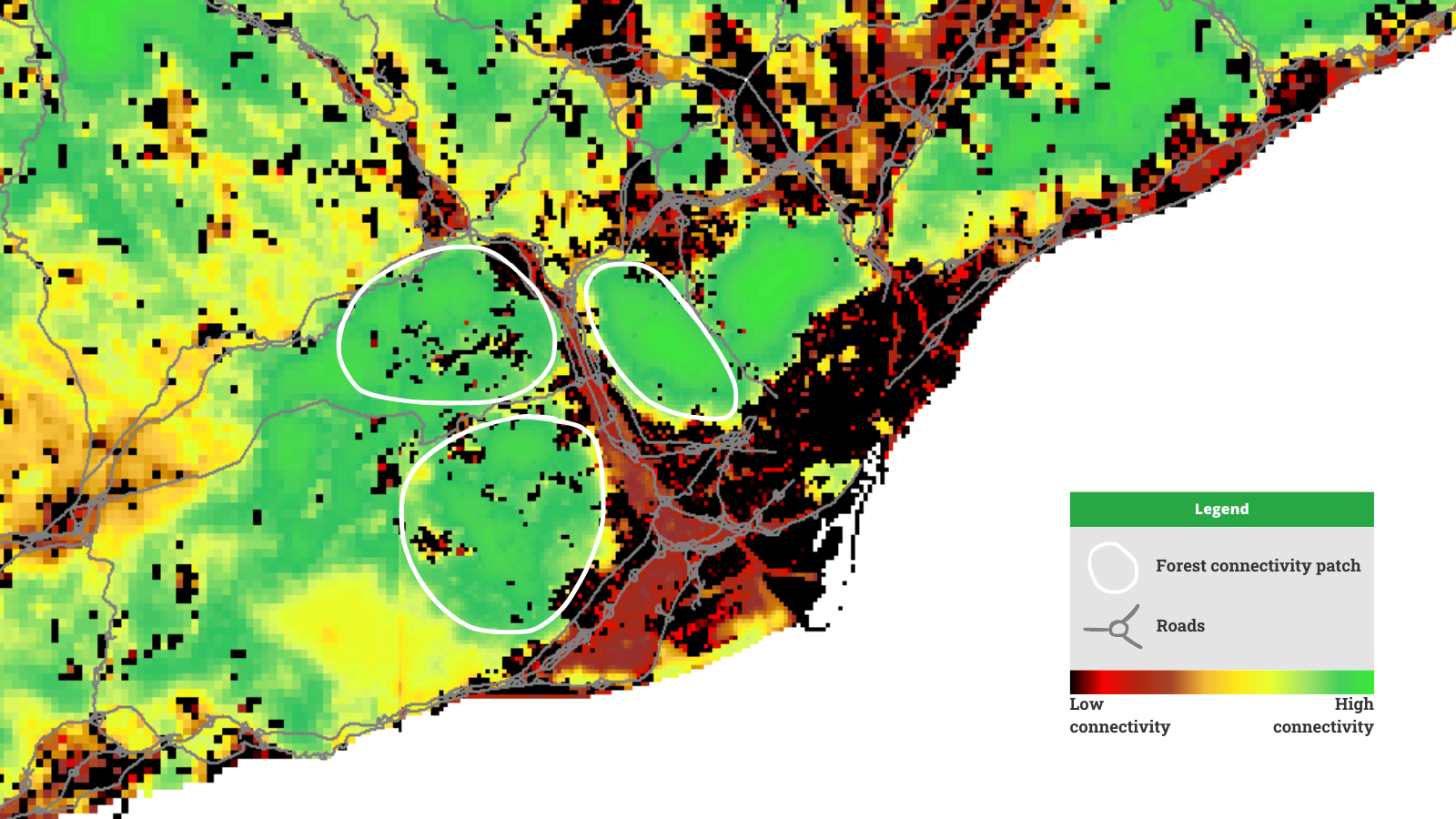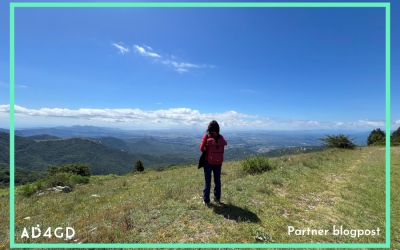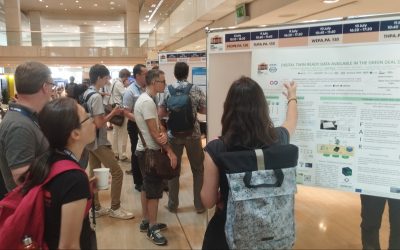Monitoring and optimization of habitat connectivity
LEADING PARTNERS

LOCATION
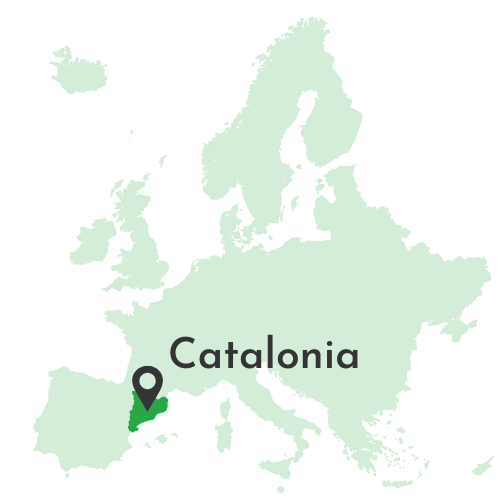
The AD4GD pilot case on biodiversity monitors habitat connectivity indices for Catalonia from 1987 to the present for the main habitat categories integrating data from heterougenous sources. Land use and land cover maps obtained through satellite imagery are enriched with information on manmade infrastructures and protected natural areas. In addition, expert knowledge is integrated, as well as data on species occurrence including observations from citizen science initiatives and IoT sensor data on the ground. Information on threatened species from the IUCN Red List is also considered.
All this is achieved ensuring the semantic interoperability of the infrastructure and compliance with the FAIR principles and OGC Standards by design.
The outcome is a product that allows comparing different habitat connectivity scenarios using a reproducible API and a user-friendly Graphic User Interface. This serves as a demonstrator of how such a GDDS-derived tool could greatly assist in evaluation, monitoring and decision making by local and regional administrations.
Simplified data flow schema for the biodiversity pilot. Author: AD4GD.
What is habitat connectivity?
Habitat connectivity describes how the landscape facilitates or impedes movement of species among resource patches (Taylor et al. 1993). Therefore, the type, amount, and arrangement of habitat use on a landscape may influence the movement and, ultimately, population dynamics and community structure. Habitat connectivity combines the physical structure of a landscape with the organism’s response to that structure (Taylor et al. 2010).
Map of connectivity for forest habitats in the metropolitan area of Barcelona. Edited image obtained using MiraMon.
All of this makes connectivity a key indicator on the status of biodiversity. Our focus is specifically set on functional connectivity, that is, how well animals or plants can move across the borders and among patches.
Which kind of biodiversity do we tackle?
In this pilot case we are looking particularly at terrestrial species, i.e. all those that do not need the aquatic environment to carry out any vital process. We are particularly concerned about the situation of endangered species. The last “State of Nature in Catalonia 2020″ report stated that “wildlife populations in Catalonia have declined by an average of 25% in the last 18 years.
Why be concerned about connectivity?
Having improved habitat connectivity indices is essential to support the nature protection objectives of the EU Biodiversity Strategy for 2030, which recognizes the need to “create and integrate ecological corridors as part of a Trans-European Nature Network to prevent genetic isolation, allow for species migration and to maintain and enhance healthy ecosystems”.
Similarly, the Convention on Biodiversity states for a “net gain in connectivity and integrity of natural systems and that at least 20% of degraded terrestrial ecosystems are under restoration, ensuring connectivity and focusing on priority ecosystems”.
National, regional, and local governments require standardized metrics to make strategic decisions for protected areas, zoning, agricultural practices, land remediation, and international reporting.
Do you want to learn more?
A new tool to enrich land-use/land-cover datasets with OpenStreetMap and ecological data: Data4Land
Data4Land is a tool that helps to calculate more detailed species distribution models, habitat suitability maps, compute habitat connectivity or urban heat islands effects, among other applications.
Earth Observation as a key tool for monitoring and managing Urban Green Spaces, insights from the 8th Mediterranean Forest Week
The AD4GD project took part in the 8th Mediterranean Forest Week showcasing a poster on Terrestrial Habitats Connectivity and participating in a panel session on Green Cities for Adaptation and Resilience.
Terrestrial Connectivity and Digital Twin ready data available for the Green Deal Data Space at the IGARSS 2024
AD4GD showcased an oral presentation on terrestial connectivity based on Landsat/Sentinel Land Cover Classes as a biodiversity indicator and a poster on Digital Twin ready data for the European Green Deal Data Space.
Stay tuned with us!
We share all our news & events in our newsletter

